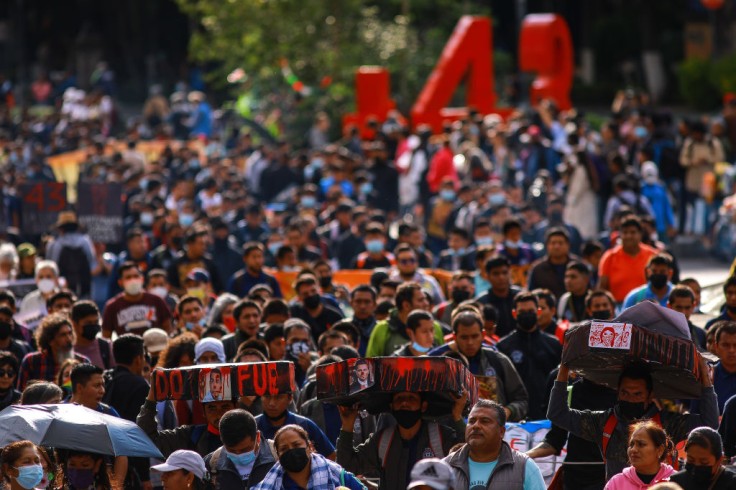
The investigation into the mysterious disappearance of 43 students from the Ayotzinapa Rural Teachers' College in Mexico has taken a significant turn as the Interdisciplinary Group of Independent Experts (GIEI) unveils its latest findings.
The multinational panel, appointed by the Inter-American Commission on Human Rights nine years ago, presented its sixth and final report at a press conference. The report sheds light on the disturbing collusion among Mexican security forces, raising questions about the fate of the missing students.
GIEI Investigators Point to Collusion in the Disappearance of 43 Missing Students
According to NBC News, the case of the 43 missing students from Ayotzinapa Rural Teachers' College first came to the world's attention in 2014, when they vanished without a trace from the city of Iguala, Guerrero.
Despite a prolonged investigation and numerous conflicting narratives, the truth behind their disappearance has remained elusive, leaving their families and the international community in anguish.
At the recent press conference, members of the GIEI disclosed startling evidence suggesting that Mexican security forces at the local, state, and federal levels may have played a sinister role in the students' disappearance.
Carlos Beristain, a panel member, asserted that there are indications of collaboration among these forces, "all collaborating to make them disappear."
According to the GIEI's comprehensive report, authorities were well aware of the students' abduction and may have been complicit in their disappearance. It revealed that the army, navy, police, and intelligence agencies had real-time information about the students' whereabouts during the crucial hours after their disappearance.
The report also exposed over 500 calls related to the incident recorded at a government security surveillance center, further implicating the security forces.
Mexican Military Accused of Obstruction
According to CTV News, reported that the GIEI's investigation faced numerous challenges, with authorities often withholding crucial information. The panel accused the Mexican military of "obstruction of justice" for providing false or incomplete information, hindering the progress of the investigation.
Furthermore, discrepancies were found in the army's reporting of the discovery of the body of Julio César Mondragón, one of the missing students, raising suspicions about the veracity of their statements.
These findings have cast doubt on the previous official account, put forward during the administration of former President Enrique Peña Nieto, which claimed that corrupt police in league with a local drug gang were responsible for the kidnapping, killing, and burning of the students.
The GIEI report, however, has discredited this narrative, shedding light on the inconsistencies in the official version.
Continuing the Search for Justice
Despite the conclusion of the GIEI's investigation, the Mexican government remains committed to seeking justice for the disappeared students.
The New York Times reported that President Andrés Manuel López Obrador vowed to continue the case, even forming a "truth commission" upon taking office in 2018 to investigate further.
The President announced that over 120 to 130 people, ranging from high-ranking officials to civilians, have been arrested in connection with the case.
As the world watches closely, the families of the missing students, human rights activists, and concerned citizens anxiously await the truth to emerge.
The search for justice and accountability continues as the heartrending mystery of the 43 missing students from Ayotzinapa Rural Teachers' College persists, leaving an indelible mark on Mexico's human rights landscape.